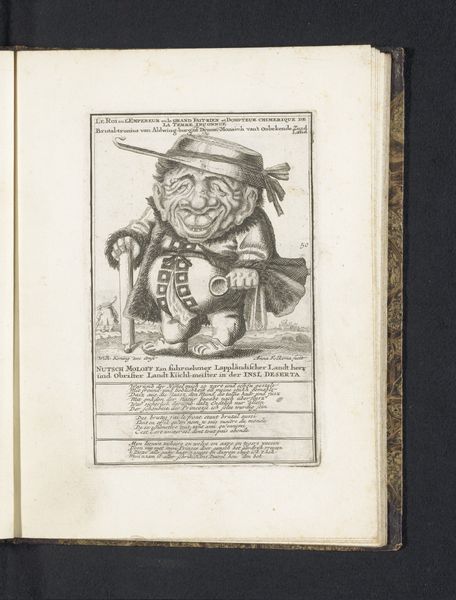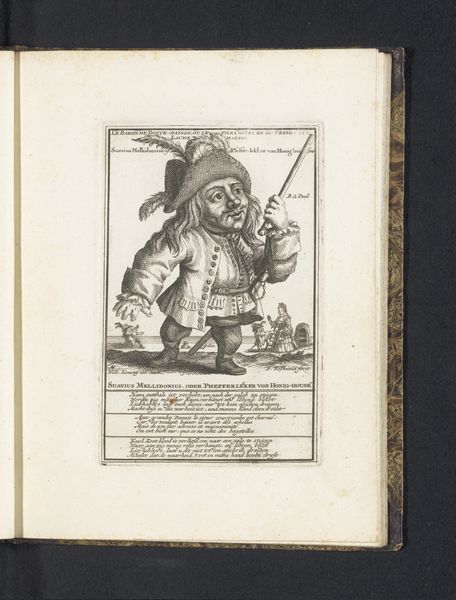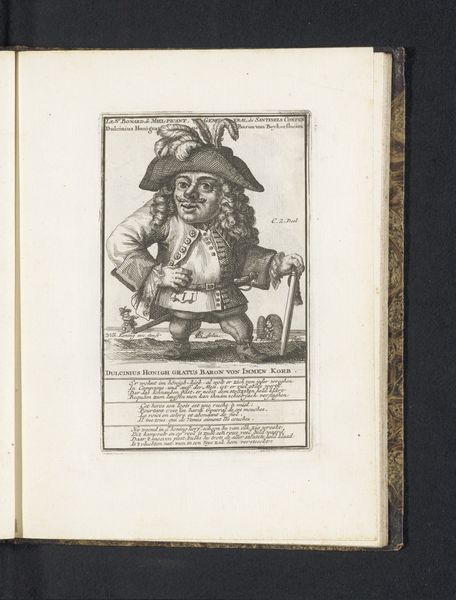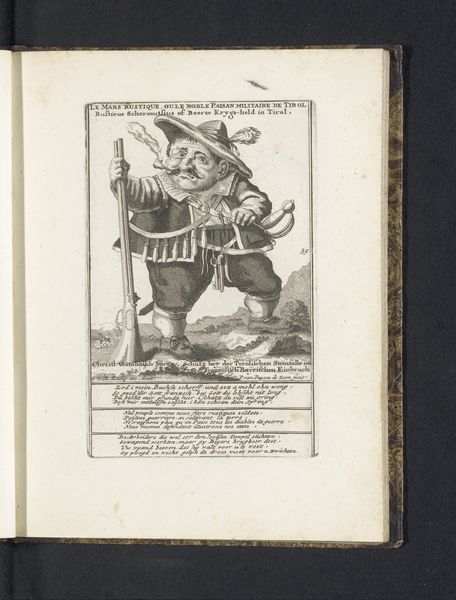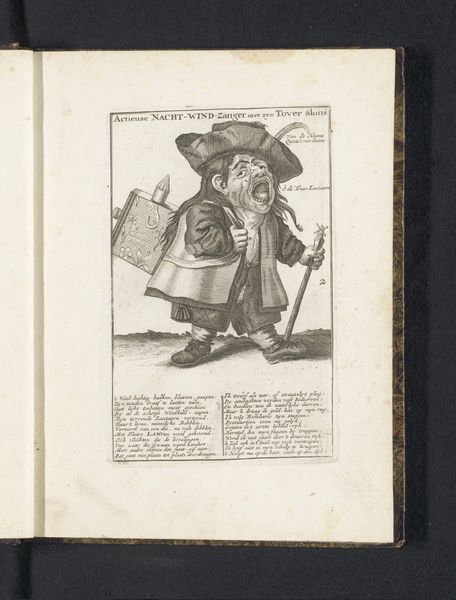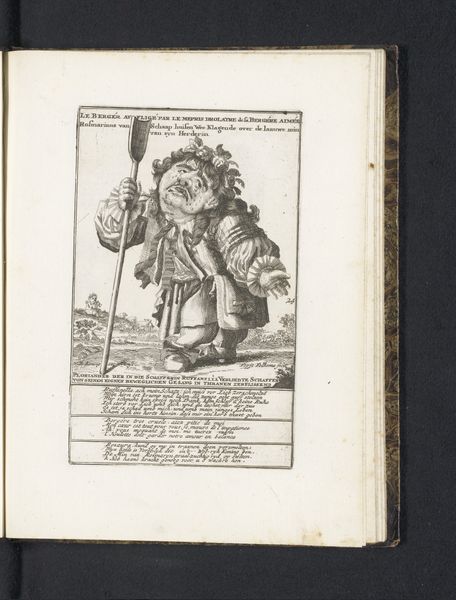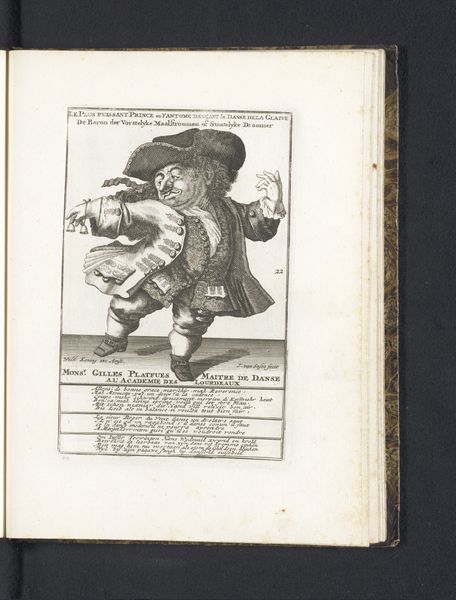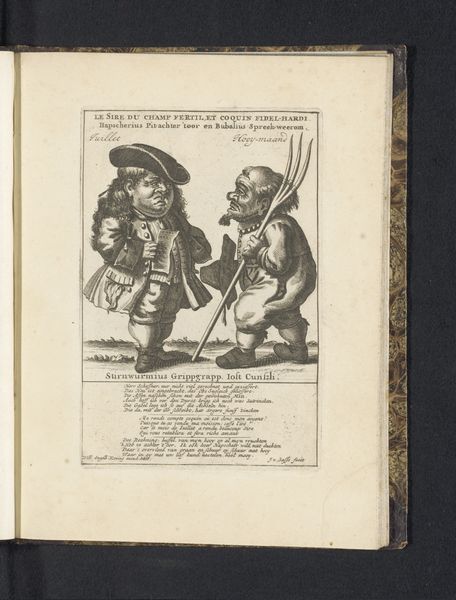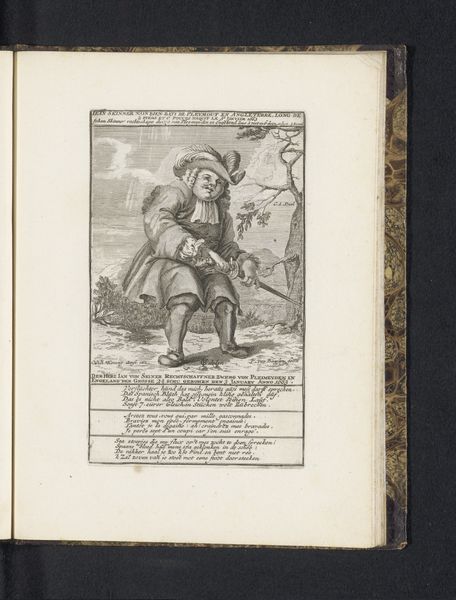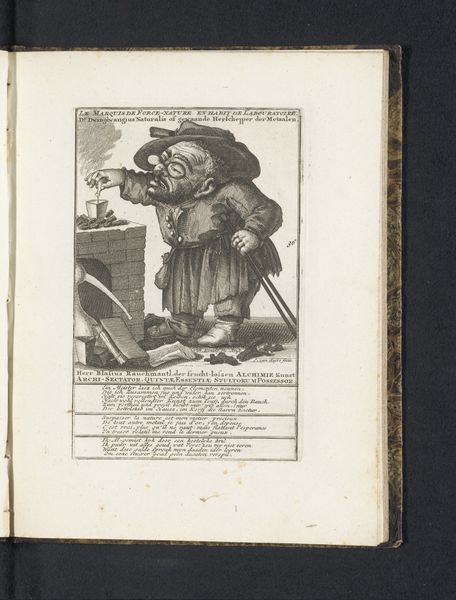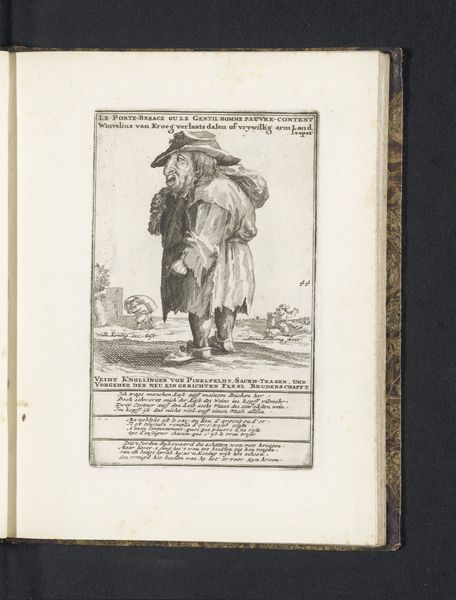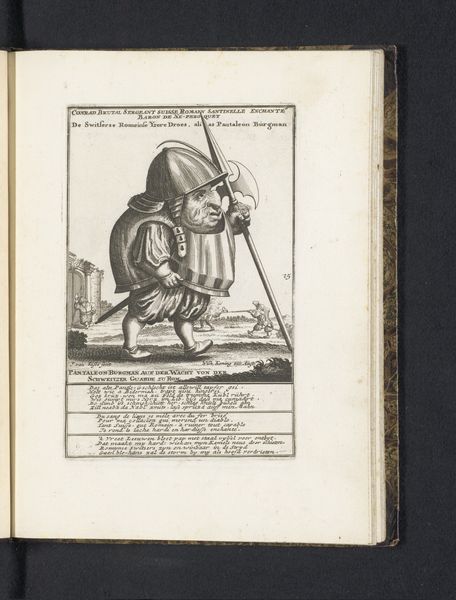
print, engraving
#
baroque
# print
#
caricature
#
figuration
#
engraving
Dimensions: height 169 mm, width 105 mm, height 227 mm, width 170 mm
Copyright: Rijks Museum: Open Domain
Editor: So, this print, titled "The Dwarf Roelandus Blitzzoon," was made by Pieter van Buysen the Younger, sometime between 1718 and 1720. It's a baroque engraving of a rather… aggressive looking little fellow. I’m struck by the caricature – he seems both important and ridiculous at the same time. What can you tell me about it? Curator: This image operates on several symbolic levels. Look at his stance, the swagger; this figure intends to convey power, doesn’t he? But consider how that authority is undercut by his exaggerated features and diminutive stature. In this way, the figure of Roelandus is laden with both the aspirations and anxieties of its time. Editor: Anxieties? In what way? Curator: Well, think about the historical context. The 18th century was a time of intense social stratification, but also of rising bourgeois power. Caricatures like this allowed people to lampoon those in positions of authority. The symbolic importance of his sword, the very mark of a gentleman, is turned on its head, isn’t it? This engraving, then, uses culturally recognized visual tropes to speak a rather subversive message, I’d say. Editor: So, by playing with those symbols, it's mocking the established order? Curator: Precisely. These images are cultural storehouses. They demonstrate how readily artists can manipulate widely-accepted symbols to poke fun at cultural memory, playing on established understandings of dress, posture, even heroic archetypes to challenge prevailing views. Editor: I never thought about caricature having such a sophisticated way to critique power. Now I see so many layers in what seemed like a simple, funny picture. Curator: It reveals how enduring cultural meanings and symbols continue to carry different weights over time, don't they?
Comments
No comments
Be the first to comment and join the conversation on the ultimate creative platform.


